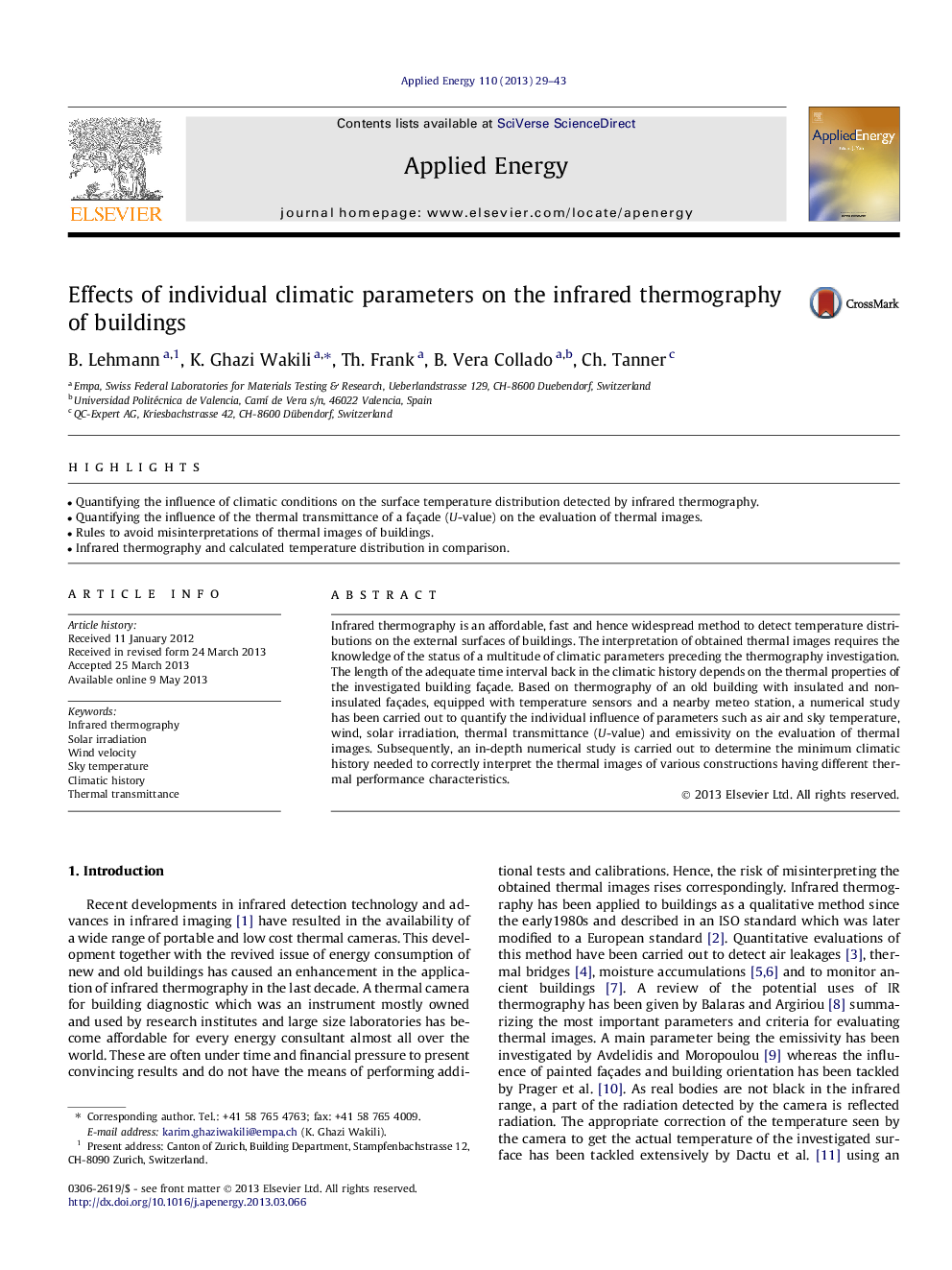| Article ID | Journal | Published Year | Pages | File Type |
|---|---|---|---|---|
| 243047 | Applied Energy | 2013 | 15 Pages |
•Quantifying the influence of climatic conditions on the surface temperature distribution detected by infrared thermography.•Quantifying the influence of the thermal transmittance of a façade (U-value) on the evaluation of thermal images.•Rules to avoid misinterpretations of thermal images of buildings.•Infrared thermography and calculated temperature distribution in comparison.
Infrared thermography is an affordable, fast and hence widespread method to detect temperature distributions on the external surfaces of buildings. The interpretation of obtained thermal images requires the knowledge of the status of a multitude of climatic parameters preceding the thermography investigation. The length of the adequate time interval back in the climatic history depends on the thermal properties of the investigated building façade. Based on thermography of an old building with insulated and non-insulated façades, equipped with temperature sensors and a nearby meteo station, a numerical study has been carried out to quantify the individual influence of parameters such as air and sky temperature, wind, solar irradiation, thermal transmittance (U-value) and emissivity on the evaluation of thermal images. Subsequently, an in-depth numerical study is carried out to determine the minimum climatic history needed to correctly interpret the thermal images of various constructions having different thermal performance characteristics.
